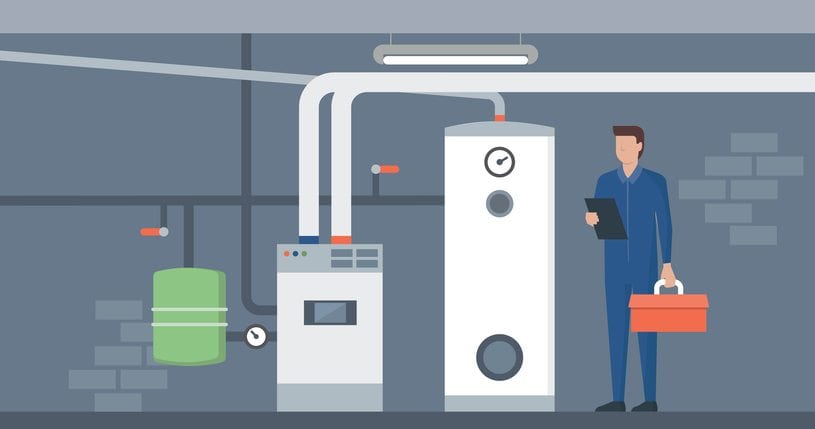High-efficiency furnaces have a steep price tag compared to standard efficiency units, so it’s worth taking a deeper look into whether it’s investing that added expense for your home. Are there enough benefits to outweigh the initial cost, and if so, what are they?
The upfront price of a new high-efficiency furnace can run as high as $10,000, while standard efficiency furnaces max out at about $4,000. The installation process for high-efficiency furnaces can also be costly. The furnace requires two pipes and a drain, so minor construction work may be necessary in order to properly install it. And if you are thinking you might move in the near future, you likely won’t be around to reap the cost rewards of high efficiency, since it takes years to recoup the initial investment.
However, there are numerous reasons why a high-efficiency furnace offers a huge advantage. While your upfront price tag is steeper, you’re likely to see a pretty impressive drop in your monthly heating charges. A standard efficiency furnace operates at around 80% AFUE (annual fuel-utilization efficiency), meaning one fifth of all your heat escapes without ever warming you up. High efficiency furnaces, on the other hand, can operate at up to 99% AFUE. As a bonus, a furnace of 95% or over qualifies for government incentives, reducing that upfront price by hundreds of dollars to encourage more homeowners to make the switch.
Newer furnaces that run more efficiently produce steadier heat, particularly if they are equipped with two-stage heating that allows for a slower speed. The slower speed only uses about two thirds of the furnace’s capability, and is generally sufficient without costing as much as a furnace turning off and on at full blast. Both high and standard efficiency furnaces are available with two-stage heating, but combining the two-stage heating with high efficiency overall will help you see a drastic cost reduction.
Of course, one of the main benefits of high-efficiency furnaces is right in their name: they work harder. A furnace operating at 80% means not only a lot of lost money, but also a lot of pollution into the environment. By reducing waste, you are reducing the carbon footprint of your home. This makes high-efficiency furnaces the green choice for homeowners who want to minimize their impact on climate change. The cumulative effect can actually be greater than switching to an electric vehicle—and easier in the long run.
High-efficiency models are an excellent choice—particularly for harsh winters, where homes put a heavy demand on furnaces. The more often and more heavily a furnace is used, the more evident it will be when there is an efficient unit working through 95% of the air it takes in, as opposed to 80%. The heating bills will be lower, the pollution will be lower, and your satisfaction will be higher with a high-efficiency furnace heating your home.






